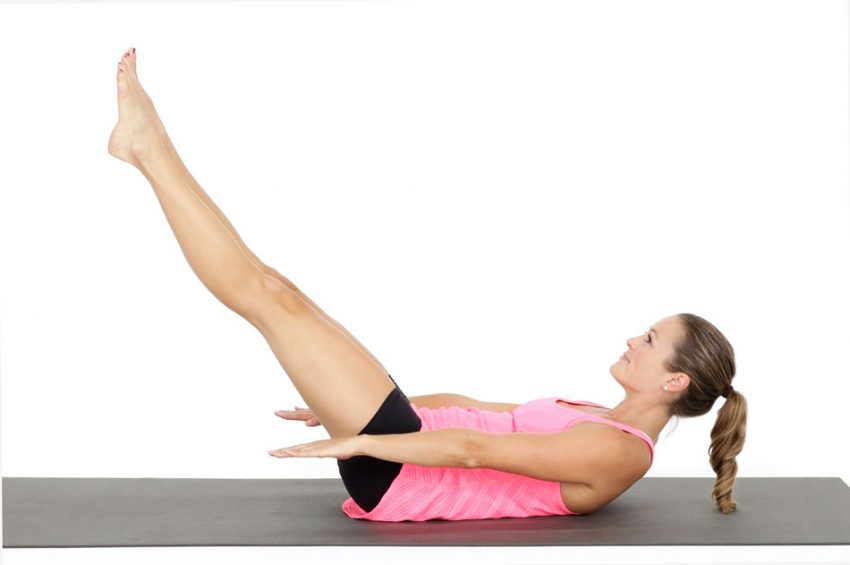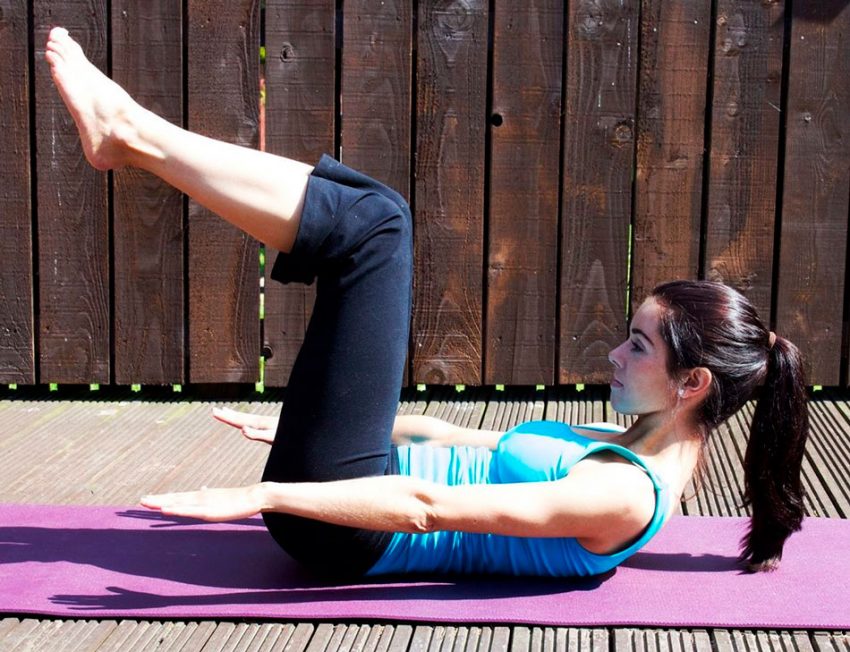Exercise 100 comes from Pilates. Joseph Pilates invented it to strengthen the muscles of the whole body, heal the spine, improve coordination, and prepare a person for any stress. The movement allows you to engage your abs, arms, back, glutes, and legs. At the same time, it is quite simple and not traumatic, so that most people will not have problems with its implementation.
The benefits and disadvantages of exercise

The benefit of the “hundred” is that this exercise is suitable for general physical training and beginners. It gradually strengthens the abdominal muscles and improves coordination of movements. Over time, a person who regularly performs the “hundred” will certainly cope with more complex tasks.
The advantages of the exercise are as follows:
- Helps to tighten the belly;
- It works not only the rectus abdominis muscle, but also the transverse muscles, reduces the waist;
- Strengthens the muscles of the back, legs, arms, and core. This is especially true for beginners;
- Gives a small cardio load, increases heart rate, trains the heart.
For a tummy tuck, a hundred may be even more effective than a regular curl. Throughout the exercise, the muscle remains in good shape, so the performance can be high.
The disadvantage of the exercise is that it cannot be complicated. At a certain moment, simply “hundreds” will not be enough, the athlete will run into a “plateau”, and progress will stop. But on the other hand, few people use Pilates movements as a way to “pump up to the cubes.” Usually the goals are different, and for them the level of exercise is completely sufficient. “Hundred” will help you recover from pregnancy, improve mobility, strengthen muscles, and start doing fitness, if you have not practiced anything like this before, but just worked in the office.
Execution technique

Pilates exercises are divided into difficulty levels. The Hundred is no exception.
Beginners perform the exercise in the following technique:
- Lie on the floor on a mat, pull up your stomach so that the pelvis “tilts” forward, the spine is pressed to the floor;
- Raise your legs to the “table top” position, that is, the lower leg is parallel to the floor;
- Tear off the chest from the floor, pull in the stomach even more, curl inward;
- Stretch your arms in front of you and perform 5 blows in the air with them while they are straight;
- 5 blows palm up, 5 down, 10 cycles in total;
- After that, you need to carefully lay the vertebra body behind the vertebra back.
For the more advanced

The movement with the hip perpendicular to the floor is easy enough. But you can stretch your legs at an angle slightly forward, and leave them there, doing a hundred. The result will be an option in which you will need to draw in your stomach even more, and literally force yourself to press the spine to the floor.
Errors
The following mistakes are usually made:
- Press the chin to the chest, straining the neck;
- Relieve tension from the abdominal muscles by bending the legs at the hip joints and pressing them against the stomach;
- Tear off the lower back from the floor, overloading it;
- Pull the head into the shoulders;
- They are in too much of a hurry, literally striking the air with their straight arms with great speed;
- Relieve the load from the target muscle due to too active and sweeping arm movements.
Inclusion in the program

- At the initial stage, exercises from the Pilates system are performed in one approach. The goal is complete control of both body position and breathing, the condition of the abdominal muscles, and excess stress in the body. The exercise is performed in 5 blows per inhalation, and 5 for exhalation, and is intended not so much for pumping muscles as for general strengthening and tone;
- Continuing ones can do first 100 punches with their hands, and then perform the movement in several approaches;
- In Pilates, this movement is considered difficult, and usually completes the cycle of exercises for the abdominal muscles;
- If the exercise is included in a regular fitness workout, it should be performed in 2-3 sets at the end of the session;
- As soon as the “hundred” with legs in the table top position becomes light, you need to go to extended legs;
- Further progression is to lower the legs lower, but to the point at which the lower back begins to come off. If it comes off, you shouldn’t lower it anymore.
The exercise is intended for general physical training, as soon as it ceases to seem difficult, you can add preliminary fatigue in the form of twists, planks, and other movements to the press. Or you can switch to another style of training, and start doing hanging leg raises, twisting and other exercises.
Variety in press training will help you achieve impressive results. Combine “one hundred” with other exercises, and you are sure to get a toned and flat stomach.
